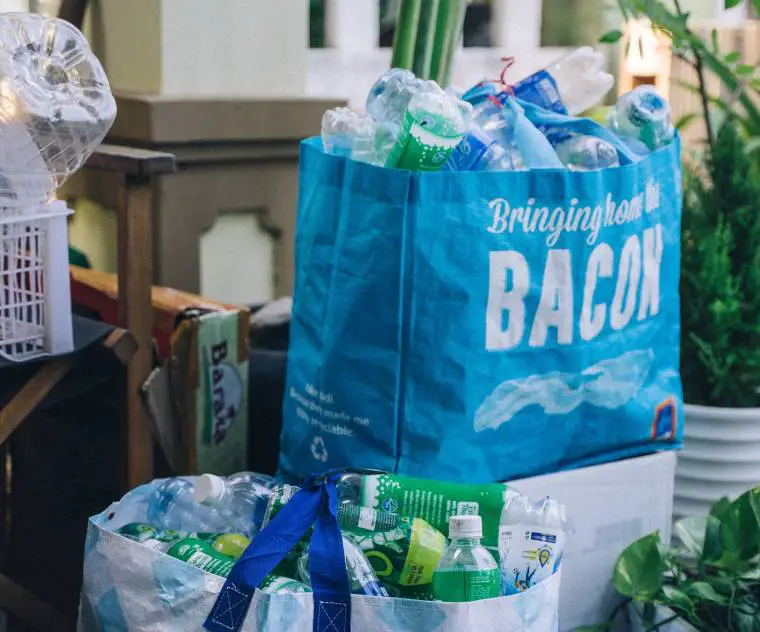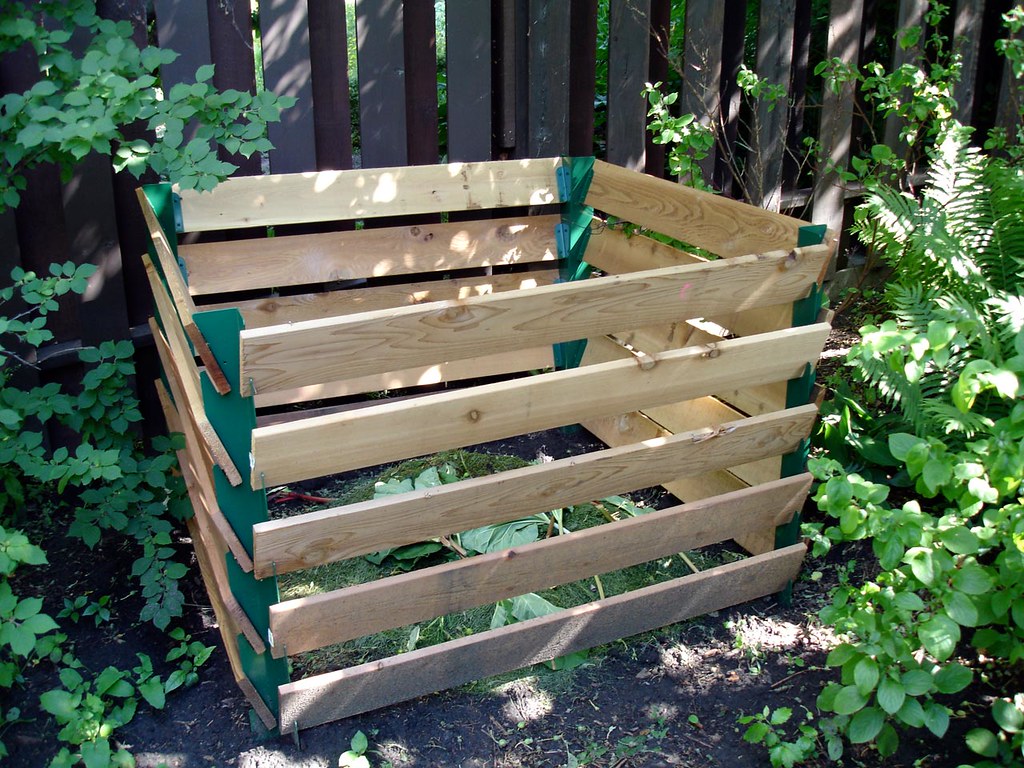Modern waste is an environmental issue. Excess garbage causes plastic pollution and overcrowded landfills. However, as individuals, we can reduce waste by adopting simple but effective habits. This article discusses 13 simple ways to reduce waste at home and promote sustainability.
Waste is any unwanted stuff. It contains packaging, food leftovers, and electronics. Waste reduction saves resources, reduces pollution, and preserves ecosystems for future generations.
Use Reusable Bags and Containers

Reusable bags and containers decrease waste easily. You may reduce landfill waste by using cloth grocery bags or reusable containers for leftovers. This method cuts waste and saves money.
Benefits of using reusable bags and containers
Plastic bags and containers pollute and destroy ecosystems. Reusable alternatives limit plastic manufacturing and waste in landfills, seas, and other natural habitats.
- Resource Conservation: Cotton, canvas, or robust polymers are some examples of the kinds of materials that are commonly utilized in the production of reusable bags and containers. You may avoid wasting resources on producing new throwaway objects by utilizing these products several times.
- Cost Savings: Even though the original cost of reuse bags and containers may be a little higher than that of single-use options, in the long run, they are cheaper. You can save money over time if you don’t have to buy throwaway bags and packages over and over.
- Versatility and Durability: A wide range of options in size, style, and material make reusable bags and containers useful for a wide range of situations. Reusable choices are useful and long-lasting, whether you’re going grocery shopping, making your lunch, or putting away leftovers.
Tips for incorporating reusable items into daily life
- Keep reusable bags handy: Always bring a reusable shopping bag with you, whether it’s one that folds up and fits in your purse or one that’s stronger and can hold more weight. Keep a few bags in your car, by your front door, or in your backpack so you’re always ready.
- Invest in reusable produce bags: Rather than using single-use plastic bags for fruits and vegetables, choose mesh or fabric produce bags that can be reused. They are easy to carry, can be washed, and are great for keeping your food organized and lowering the amount of plastic you use.
- Bring your own containers: Bring your own containers for takeout or deli/bakery meals. Many businesses welcome waste-conscious customers. Instead of throwaway containers, provide yours.
- Choose reusable water bottles and coffee cups: Buy a good water bottle and coffee mug. To keep hydrated, fill your water bottle before leaving home. Bring a reusable coffee cup to your favorite café and ask them to fill it.
- Embrace reusable lunch containers: Use reusable lunch containers instead of plastic bags or cling wrap. Glass or BPA-free plastic containers keep food fresh and decrease waste.
- Get creative with storage: Use airtight reusable containers for leftovers instead of disposable bags. Mason jars, glass or stainless-steel containers, and silicone food sacks are great reusable options.
Remember that it may take some time to get used to using reusable bags and containers as part of your daily routine. But the good effects on the environment and the pleasure of cutting down on waste make it well worth the work. By making these small changes, you’re doing your part to make the future more sustainable.
Avoid Single-Use Plastics
Single-use plastics, like plastic bags, straws, and throwaway plates and cups, do a lot to pollute the earth. Most of the time, these things end up in our seas, where they hurt marine life and upset ecosystems. To solve this problem, it’s important to stay away from plastics that can only be used once. Choose things like stainless steel straws, bamboo cutlery, and glass water bottles that can be used more than once.
Negative impact of single-use plastics on the environment
- Pollution and Marine Life: One of the biggest sources of waste in our oceans and rivers is single-use plastics. When not thrown away properly, they break down into tiny pieces called microplastics that sea animals eat. This is bad for their health and for ecosystems as a whole.
- Resource Depletion: Single-use plastics are made from fossil fuels, which depletes resources that can’t be replaced. When these materials are mined or made, greenhouse gases are also released. This makes climate change even worse.
- Landfill Overload: Single-use plastics are discarded after a short time, filling landfills. These materials take hundreds of years to degrade, consuming space and degrading the ecosystem.
- Environmental Hazards: Production, disposal, and combustion of single-use plastics release toxic compounds into the environment, endangering human and animal health. Plastic pollution harms ecosystems, soil fertility, air, and water.
Alternatives to single-use plastics
- Reusable Bags: Use durable fabric or jute shopping bags. Always have them in your car, bag, or purse for shopping trips.
- Stainless Steel or Glass Straws: Buy stainless steel, glass, or bamboo straws. Bring them or order without straws.
- Cutlery and Utensils: For on-the-go meals, bring stainless steel or bamboo utensils. Reusable cutlery prevents waste.
- Water Bottles: Get a stainless steel or glass water bottle. Fill it with tap or filtered water to keep hydrated all day without using disposable water bottles.
- Coffee Cups: Bring a reusable coffee mug to cafés. Many places fill your cup instead of using disposable ones.
- Food Containers: Use glass or BPA-free plastic takeout or leftover containers instead of single-use plastic. These microwave-safe, robust containers are eco-friendly.
- Beeswax Wraps: Beeswax or silicone food coverings keep food fresh. These eco-friendly, washable alternatives are reusable.
- Bulk Shopping: Bulk purchases decrease packing waste. Fill your own reusable containers with grains, nuts, and spices at bulk food stores.
There are numerous ways to reduce waste at home and protect the environment, such as eliminating the use of single-use plastics and opting for reusable alternatives. It’s important to remember that even small, everyday changes can collectively contribute to a cleaner and greener Earth.
Reduce Food Waste
Addressing ways to reduce waste at home, food waste has become a significant global issue. By practicing mindfulness regarding our food consumption and implementing strategies to minimize waste, we can make a substantial impact in combating this problem. Plan meals ahead of time, make a shopping list, and store food in the right way to make it last longer. Also, think about composting your food scraps to cut down on the amount of biological trash that ends up in landfills.
Reasons to reduce food waste
- Environmental Impact: Methane, a powerful greenhouse gas that adds to climate change, is made from food waste that ends up in landfills. By wasting less food, we can cut down on greenhouse gas production and make life on Earth easier.
- Resource Conservation: To make food, you need important things like water, energy, and space. When we throw away food, we also throw away the resources that were used to grow, pick, ship, and package it. By wasting less food, we save these valuable resources.
- Economic Savings: Food loss costs money, both for the person who throws away the food and for society as a whole. We save money by making better use of the food we buy and eat when we waste less of it. Keeping food waste to a minimum can also help lower food prices and ease the strain on the budget.
- Alleviating Food Insecurity: When millions of people don’t have enough food to eat, it’s the right thing to do to waste less food. By being aware of how much food we eat and not wasting it, we can help make sure that more food gets to people who need it.
Tips for reducing food waste
- Plan Meals and Make a Shopping List: Plan your meals for the week and make a buying list based on the items you need. This keeps you from making impulsive purchases and makes sure you only buy what you need, so less food goes to waste.
- Proper Storage: Properly store perishable items. Airtight containers, zipper bags, or beeswax wraps preserve fruits, veggies, and leftovers. Understanding food storage conditions can avoid spoiling.
- First In, First Out: “First in, first out” when arranging your fridge and pantry. Rotate older goods to the front and fresh stuff to the rear to use them before they expire.
- Portion Control: Serve yourself and your family the right amount of food, and don’t make more than you need. You can always get more if you need to. This makes it less likely that leftovers will go to waste because they won’t be eaten.
- Creative Cooking: Use leftovers and food that is getting close to its expiration date in unique ways. Make soups, stir-fries, or frittatas out of extra veggies. Make drinks or make goods with fruits that are too ripe. Make croutons or breadcrumbs out of old bread.
- Freezing Excess Food: If you have too much food to eat before it goes bad, you might want to freeze it. Fruits, veggies, bread, and cooked meals are just some of the foods that can be frozen easily. You can keep track of what’s in your freezer by labeling and dating the things.
- Donating to Food Banks: If you have non-perishable food that you won’t eat, you might want to give it to a neighborhood food bank or another group that helps feed people in need. This way, you can help your neighborhood and keep food from going to waste.
- Composting: Composting is a great way to reuse food scraps and make plant soil that is full of nutrients. Set up a trash bin in your backyard or look into programs for composting in your area.
By using these tips and eating more mindfully, we can cut down on food waste and help the environment, business, and society. Together, we can try to make the world a better place to live.
Recycle Properly
Engaging in ways to reduce waste at home, recycling serves as an effective method to divert trash from landfills and conserve valuable resources. However, it is crucial to recycle correctly to ensure proper reclamation of materials. Familiarize yourself with the recycling guidelines in your locality, segregate non-recyclables from recyclable items, and rinse containers to eliminate any food residue. By effortlessly adopting these practices, you contribute to the efficient functioning of the waste disposal process.
Importance of recycling properly
- Resource Conservation: By reusing materials, recycling cuts down on the need for fresh materials. This helps save natural resources like wood, water, and minerals, and it also cuts down on the amount of energy used and greenhouse gases released during resource mining and production.
- Waste Reduction: Recycling diverts waste from landfills, where it can take years or even centuries to decompose. By recycling materials, we extend their lifespan and reduce the amount of waste that ends up in landfills, thereby minimizing environmental pollution and preserving valuable land.
- Pollution Prevention: Recycling the right way helps stop the pollution that comes from mining, processing, and making new materials. Recycling cuts down on the amount of toxic chemicals and greenhouse gases that are released into the environment. This makes the air, water, and land cleaner.
- Promoting Circular Economy: Recycling is a key part of a “circular economy,” in which things are constantly renewed and given new purposes. By recycling the right way, we help close the loop, reduce the amount of trash we make, and make our society more sustainable and resource-efficient.
Tips for recycling properly
- Know your local recycling guidelines: Learn the rules for recycling in your area. Check with your local trash management office or go to their website to find out what you can recycle and how it should be done.
- Clean and dry recyclables: To keep them from getting dirty, rinse out food and drink containers before reusing them. Take out any leftover food or drinks, as they can make it harder to recycle. Make sure the things are dry to keep mold and other problems from happening.
- Separate recyclables: Sort things like paper, plastic, glass, and metal into their own recycle bins or bags. This makes recycling easier and makes sure that materials can be organized correctly at recycle centers.
- Check for recyclable symbols: Look for symbols on the bottom of plastic containers that say “recycling.” These signs show what kind of plastic it is and whether or not it can be recovered. Some images may also tell you to do something specific, like take off the lid or label.
- Avoid recycling contamination: Recycle only recyclables. Plastic bags, Styrofoam, filthy diapers, and toxic items are pollutants. These materials can delay recycling and contaminate whole batches.
- Recycle electronics and batteries responsibly: Electronics and batteries contain precious and dangerous components that require specific recycling. Find local e-waste recycling or battery drop-off services.
- Reuse and donate: Reuse or give before recycling. Some items may be useful to others. Donate useable stuff to thrift stores, charity, or online platforms.
- Educate others: Increase community recycling awareness. Share information, resources, and advice with family, friends, and neighbors to encourage recycling and ensure everyone realizes its value.
By using these tips and doing the right things when we recycle, we can help make the future more safe and good for the earth. Remember that recycling is a group activity, and that each person’s dedication to doing it right makes a big difference.
Composting

Incorporating ways to reduce waste at home, composting is a natural and beneficial process that transforms food scraps into nutrient-rich soil. By composting organic materials like food waste and yard trimmings, you actively decrease the volume of waste destined for landfills while creating a valuable resource for agricultural purposes. Whether you initiate a compost pile or acquire a compost bin, you’ll witness your waste gradually transform into nutrient-dense compost over time.
Read more: How long does it take to compost a rotating compost bin?
Benefits of composting
- Waste Reduction: Composting diverts organic waste from landfills, where it would decompose anaerobically and produce methane, a potent greenhouse gas. By composting, we significantly reduce the amount of waste sent to landfills and alleviate the environmental burden.
- Soil Enrichment: Composting is a natural process that turns food scraps into dirt that is full of nutrients. By composting food scraps, yard trimmings, and other organic materials, you can reduce the amount of trash that ends up in landfills and make a useful resource for farming. If you start a compost pile or buy a compost bin, your trash will turn into compost that is full of nutrients over time.
- Microbial Activity: Composting helps good microorganisms grow. These microorganisms break down organic waste into humus, which looks like dark, crumbly dirt. These microorganisms help waste break down and make a healthy environment in the dirt.
- Water Conservation: Compost makes the earth better at holding water, so less water runs off and less watering is needed. It helps keep water in the soil, which makes it more resistant to dryness.
- Reduced Chemical Usage: You can use less pesticides and fertilizers made from chemicals if you use compost. Compost is a natural source of nutrients and helps keep the soil environment in order. This means that chemicals aren’t needed as much.
Composting is a simple and satisfying way to help make organic waste management more sustainable and self-sustaining. By making nutrient-rich compost out of our food scraps and yard waste, we can reduce trash, improve our soil, and make the world a better place for future generations.
Donate or Sell Unwanted Items
Donate or sell things you no longer need instead of putting them away. Used clothes, furniture, gadgets, and other things can find new homes and be used in new ways. Donating to local charities or having a garage sale is a great way to reduce waste, help your community, and maybe even make a little extra money.
Benefits of donating or selling unwanted items
- Reduced Waste: When we give away or sell things we don’t want, we make them last longer and keep them from going to waste. This lowers the need for new goods and the amount of trash that ends up in landfills.
- Resource Conservation: Instead than buying new items, give or sell them. This saves raw resources, energy, and water from making new products.
- Supporting Community Organizations: Donating things to charity groups, thrift stores, or community centers can help people in need right away. The things we no longer need can go to new places and make other people happy, especially those who may not have the money to buy new things.
- Generating Income: Selling unwanted items might help you save money or buy new stuff. It’s an excellent method to get money from unwanted items.
- Promoting Reuse and Recycling: By giving things away or selling them, we encourage people to bring them back and use them again. Things we no longer need can be useful to other people, which makes us more creative and lessens the need to make new things.
How to donate or sell unwanted items effectively
- Assess the condition and usefulness: Think about each thing you want to give away or sell. Make sure they are in good shape, work, and can still help other people. Items that are broken, damaged, or can’t be fixed should be thrown away in a responsible way or, if possible, recycled.
- Research local organizations and charities: Find area groups, thrift stores, or charities that take donations. Find out what their rules are, when they accept donations, and what items they accept to make sure your items meet their needs and standards.
- Contact local shelters or community centers: Think about contacting homeless shelters, women’s shelters, or community groups to find out what they might need. Donations of clothes, home items, and things for kids are often welcome.
- Host a yard sale or garage sale: If you want to sell a lot of things, you might want to have a yard sale or garage sale. You can tell people in your neighborhood, online, or on community message boards about the sale. Make sure you follow any local rules or get any permits you need to hold these shows.
- Utilize online marketplaces: Online places like Craigslist, eBay, Facebook Marketplace, and neighborhood buy/sell groups make it easy to get rid of things you don’t want. Take clear pictures, write full descriptions, and set fair prices to get people interested in buying your stuff.
- Package and label items: Make sure the things you give away or sell are clean, well-packaged, and labeled correctly. This lets groups or buyers know what’s inside and how good the things are, and keeps them safe while they’re being shipped.
- Consider tax deductions: Keep track of the money you give to registered non-profit organizations and ask for records. Depending on the tax laws in your area, you may be able to get a tax break for giving to charity.
- Spread the word: Tell your friends, family, and coworkers what you are giving away or selling. They might need something, or they might know someone who does. Word of mouth can help connect your useless items with people who might want to take them or buy them. This increases the chances that your items will find new homes.
- Ensure privacy and security: When selling things online or at a yard sale, don’t give out personal information and only meet possible buyers in public places where they are safe. During the sale process, keep your privacy in mind and put your safety first.
- Follow up on unsold items: If some things don’t sell or find a good home, think about how good they are and how useful they are. Think about other ways to get rid of or reuse these things, like giving them away or reusing them.
Incorporating ways to reduce waste at home, when we donate or sell unwanted items, we not only declutter our homes but also contribute to a healthier and socially responsible lifestyle. Each item finding a new home or being repurposed plays a vital role in reducing waste, conserving resources, and supporting local communities. Embracing the “reuse and recycle” mindset is a significant stride toward building a more sustainable future.
Buy Secondhand or Repair Items
“Reduce, reuse, recycle” is a good motto to live by. You can do this by buying used things or fixing what you already have. You can find great used items at thrift stores, online markets, and consignment shops. By giving these things a second chance, you help reduce trash and make the economy more stable.
Benefits of buying secondhand or repairing items
- Waste Reduction: By getting used items or fixing them up, we cut down on the need for new ones and keep useful things from ending up in dumps. This helps to save resources and reduce the damage that making and throwing away new things does to the earth.
- Extended Product Lifespan: We can make things last longer by buying them used or fixing ones we already have. It keeps things from being thrown away too soon and makes sure they keep doing their job. This helps people think of things as long-lasting and lowers the need to change things often.
- Cost Savings: Used things are often a lot cheaper than new ones, making them a good choice for people on a tight budget. Fixing things can also be cheaper than getting new ones because it usually takes less time and money.
- Unique and Vintage Finds: When you shop at secondhand stores, you can find unique, retro, or one-of-a-kind things that may not be sold in regular stores. It gives our things more personality and individuality and helps make the market more diverse and sustainable.
- Reduced Environmental Footprint: Buying used items cuts down on the need for new ones, which saves resources like raw materials, energy, and water. It also cuts down on the amount of carbon dioxide that is released when new things are made, packaged, and shipped.
How to incorporate secondhand shopping and repair into your life
- Explore thrift stores and consignment shops: Good places to find gifts that have been used before are thrift stores, consignment shops, and antique stores. Spend some time looking through their collections, and be open to finding something special.
- Online marketplaces and classifieds: Use websites like eBay, Craigslist, and neighborhood buy/sell groups to find used things in your area. Before you buy anything online, be careful and do a lot of study.
- Visit flea markets and garage sales: Check the classified ads in your area to find flea markets, yard sales, or garage sales. At these events, you can often find a wide range of used things for cheap prices.
- Host or participate in clothing swaps: Organize clothing swaps with friends, family, or community members. It’s a fun way to refresh your wardrobe without spending money and reduces clothing waste.
- Learn basic repair skills: Spend some time learning basic fixing skills so you can fix easy problems with clothes, electronics, and other things around the house. There are a lot of online lessons, workshops, and community groups that can help you get started.
- Support local repair businesses: If you can’t fix something yourself, you might want to support a local repair business or an artist who specializes in fixing or repairing certain things.
- Upcycle and repurpose: Get creative and think of ways to reuse or adapt things that no longer serve their original purpose. Make rags out of old clothes, use glass jars as storage bins, or find new uses for old furniture.
- Promote a circular economy: By getting used things or fixing them up, you take part in the “circular economy,” in which goods are used as long as possible. This cuts down on waste and makes the economy stronger and more stable.
Buying secondhand items allows us to find unique treasures and supports the local economy. It gives us the opportunity to discover items with a story and character, adding a touch of individuality to our lives. Additionally, the cost savings associated with secondhand shopping can free up our budgets for other priorities.
Repairing items not only extends their lifespan but also helps us develop valuable skills. Learning basic repair techniques empowers us to fix minor issues and maintain our possessions. By repairing instead of discarding, we reduce our environmental footprint and foster a culture of resourcefulness and self-sufficiency.
Here are a few tips to help you incorporate secondhand shopping and repair into your daily life:
- Research and explore: Spend some time looking into thrift stores, resale shops, and online markets in your area. Make it a habit to go to these places often to find secret gems and one-of-a-kind things.
- Prioritize quality: When buying used, look for things that are made well and will last. Check them carefully for wear and damage, and make sure they still work and meet your needs.
- Think beyond fashion: Used clothes are famous, but you don’t have to stick to just fashion. Look into buying used furniture, gadgets, kitchenware, books, and other things for your home.
- Network and share: Get in touch with your friends, family, and coworkers to share things or set up swaps. Sharing tools and working with other people can give you more choices for used things.
- Educate yourself: Use internet lessons, workshops, and classes to learn how to fix things on a basic level. Many helpful tools for do-it-yourself repairs can be found on YouTube, in online groups, and in community centers.
- Start small: Start with easy things to fix, like buttons that are loose or small problems with technology. As your confidence grows, you can gradually improve your repair skills and take on more difficult jobs.
- Support repair services: If you don’t have the time or skills to fix something, look for a nearby repair shop or a professional who specializes in that area. Supporting these services supports a circular economy and pushes people to start businesses in their own communities.
- Get creative: Accept the idea of upcycling and reusing things. Think outside the box and find new ways to use things that you might have thrown away. Make storage bins out of old jars or turn an old piece of furniture into something new and useful.
By buying used things and fixing things, we can live in a way that is better for the environment. We cut down on waste, save resources, help local businesses, and encourage people to be creative and take care of themselves. Let’s choose to give used things a second chance and fix what we can to create a more sustainable and aware customer society.
Use Digital and Paperless Options
In the modern age we live in now, many things can be done without using paper. Use e-tickets instead of written ones, and read books and newspapers on electronic devices instead of paper copies. By using less paper, you save trees and the energy needed to make paper while cutting trash.
Benefits of using digital and paperless options
- Reduction of Paper Waste: Using digital platforms and tools cuts down on the need for paper, which helps save trees and cuts down on the amount of water and energy used to make paper.
- Lower Greenhouse Gas Emissions: Greenhouse gases are released when trees are cut down for paper and when the paper is made. By getting rid of paper, we can reduce these pollution and help stop climate change.
- Cost Savings: Using digital options eliminates the need to purchase paper, ink, and printing equipment. It can also save money on postage, shipping, and storage costs.
- Convenience and Accessibility: Digital choices are easy to use and offer comfort. Digital storing, sharing, and accessing of documents, files, and information saves room and makes things run more smoothly.
- Enhanced Collaboration: Digital tools make it easy for people to work together on papers at the same time, make changes, and give comments in real time. This makes people more productive and cuts down on the need to print multiple copies of the same paper.
- Reduced Mail and Shipping: When you use digital ways to talk, like emails or online messages, you don’t have to send as much mail or packages. This saves resources and cuts down on the amount of carbon dioxide released by vehicles.
By using digital and paperless choices, we can save a lot of paper, save resources, and live in a more environmentally friendly way. Small changes we make every day can have a big effect on the world and help us move toward a more digitally connected and environmentally friendly future.
Practice Mindful Consumption
By adopting ways to reduce waste at home, practicing mindful consumption entails taking a thoughtful approach before making any new acquisitions. Prior to buying, reflect on whether the item is genuinely needed and contemplate its potential environmental impact. Emphasize the selection of well-crafted, long-lasting products, with a preference for those crafted from sustainable materials. By cultivating awareness of our consumption habits, we actively contribute to waste reduction efforts and help shape a more sustainable future.
Benefits of practicing mindful consumption
- Reduced Waste: Mindful spending helps us avoid buying things we don’t need and stop getting too many things. By only getting what we really need and will use, we can cut down on waste and help the earth.
- Conservation of Resources: Mindful usage cuts down on the need for natural resources like water, energy, and raw materials that are used to make and ship goods. This helps save limited resources and slow the damage to the world.
- Support for Ethical Practices: By being smart shoppers, we can choose to support companies and brands that put an emphasis on doing the right thing. This includes fair trade, getting from safe places, and making things in a responsible way. By choosing goods and services that are in line with our values, we can make the market a better place.
- Financial Savings: When you consume things with care, you think about their long-term value and how long they will last. By buying high-quality items that last longer, we can cut down on the number of times we have to buy new ones and save money in the long run.
- Promotion of Sustainable Innovation: As customers, we can change market trends by the decisions we make. By asking for sustainable and eco-friendly items, we can push companies to come up with new ideas and make more options that are good for the earth.
By being more aware of how we use things, we can make better decisions, reduce waste, and help make the world more sustainable. Small changes in the way we use things can make a big difference for the earth and society. Let’s try to make good choices and be conscious shoppers who put the world, ethics, and sustainability first.
Support Sustainable Brands and Products
Supporting brands that care about the environment is a good way to cut down on waste. Look for items that are good for the environment, are made in a fair way, and have clear supply lines. Many companies now offer options that are better for the environment, like biodegradable packing or choices that can be reused. By buying these brands, you show that you care about the environment as a customer.
The Importance of Supporting Sustainable Brands and Products
- Environmental Impact: Sustainable brands put an emphasis on doing things that are good for the environment, like using renewable materials, cutting down on trash, and lowering their carbon footprint. By buying from these brands, we encourage the use of sustainable practices that help protect the natural resources and landscapes of our world.
- Social Responsibility: By buying from these brands, we urge others to use sustainable methods that help protect the natural resources and landscapes of our world.
- Innovation and Inspiration: Sustainable brands are often the first to come up with new and creative ways to solve environmental problems. By helping them, we encourage the creation and use of environmentally friendly tools, products, and practices, which inspires others to do the same.
- Market Influence: As buyers, we can change the market with the things we buy. By picking sustainable brands, we create a market for items that are good for the world and society. This makes other businesses change their ways to meet what customers want.
- Promotion of Transparency: Sustainable brands often put openness first, giving information about where their products come from, how they are made, and how they affect the earth. By backing these brands, we encourage more openness in the industry as a whole, which helps customers make better decisions.
Supporting brands and items that are good for the environment is a great way to use your purchasing power to make a positive difference. We can help make the world more sustainable and fair if we choose to support brands that care about sustainability and social responsibility. Let’s recognize the power of our choices and support the brands that share our values and work toward a better future for both people and the world.
Minimize Energy and Water Usage
Not only does saving energy and water help the environment, but it also saves you money. Turn off lights and unplug electronics when not in use. Choose energy-efficient tools and change your thermostat to save money on heating and cooling. In the same way, you can save water by taking shorter baths, fixing leaks quickly, and using products that use less water. By using less energy and water, you help cut down on waste and encourage a more healthy way of life.
Educate Others
For society to become more healthy, people need to know how to reduce waste. Talk to your friends, family, and coworkers about how important it is to reduce waste, and give them tips that they can use in their own lives. By teaching other people, you can make a bigger difference and get more people to join the cause.
Get Involved in Community Initiatives
Joining neighborhood groups and projects that work to reduce waste is a great way to make a real difference. Join neighborhood cleanups, trash drives, or other events that help the environment. These projects give you the chance to get involved in your community’s attempts to reduce waste. By working with people who have the same goals as you, you can have a bigger effect and make changes that will last.
Conclusion
By implementing strategies to reduce waste at home, we not only benefit the environment but also enhance our overall well-being. Engaging in practices like reusing items, avoiding the use of single-use plastics, and being mindful of our consumption habits, we can make significant contributions towards waste reduction. It’s important to recognize that even the smallest individual actions have the power to create a positive impact when we come together to build a more sustainable future for generations to come.
FAQs
1. Is it challenging to incorporate reusable items into my daily life?
Not at all! It may require a little adjustment at first, but once you make reusable items a part of your routine, it becomes effortless and rewarding.
2. How can I recycle properly if the guidelines are unclear in my area?
Reach out to your local waste management or recycling center for clarification on recycling guidelines. They can provide you with the necessary information to ensure you recycle properly.
3. What are some benefits of composting?
Composting helps reduce waste, enriches the soil, and reduces the need for chemical fertilizers. It’s a natural and sustainable way to manage organic waste.
4. Can I really make a difference by practicing waste reduction at an individual level?
Absolutely! Small actions, when multiplied, have a significant impact. By reducing waste in your daily life, you set an example and inspire others to do the same.
5. How can I encourage my community to get involved in waste reduction initiatives?
Organize local events, workshops, or awareness campaigns to educate and engage your community. Collaborate with local organizations and government agencies to amplify your efforts.

As a dedicated mother and passionate software developer, she weaves her diverse experiences into captivating stories that inspire and engage readers. Emma's love for sustainable living and environmental consciousness permeates both her personal and professional life. When she's not immersed in the world of coding and software development, Emma can be found nurturing her family and tending to her thriving organic garden. Her commitment to sustainable practices extends to every aspect of her life, from repurposing household items to embracing eco-friendly technologies.










